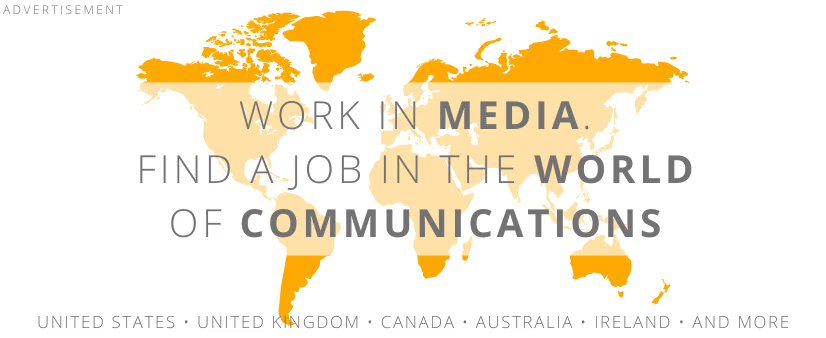Why do we believe fakes? Science reveals the psychology of virals
KFiWhy do emotions grab more attention than evidence, and why can a fake authority overshadow scientific data? Researchers from Warsaw University of Technology, Jagiellonian University, and SWPS University in Poland sought the answers. Here are their findings.
PR in Poland. Ranking of the largest public relations agencies 2025
KFiThe smallest teams often generate the most publications, and agencies outside Warsaw are increasingly capturing media attention. This unexpected distribution of power is one of the key findings from the 2025 PR Agency Ranking in Poland, developed by Widoczni and IMM.
Investigative journalism in Europe. Newsrooms face pressure
KFi, NewseriaMedia and political representatives point to the difficult situation of investigative journalism in Europe. Newsrooms are reluctant to invest in this segment due to high costs and the large amount of time and effort required. Most of all, however, they fear legal proceedings.
Energy under attack. Disinformation threatens Poland’s power transition
KFiOne in five online messages about energy may be fake. Between 2022 and 2025 nearly 70,000 publications warning and condemning disinformation in this strategic sector were recorded in Polish media. They generated a reach of 1.19 billion impressions.
The History of The New York Times. All the news that's fit to print
Małgorzata DwornikIn the heart of 19th-century New York, when news from across the world traveled via telegraph and the newspaper was the voice of public opinion, two ambitious journalists created a modest four-page daily that would eventually become a legend.
AI changes the game. A new face of internet search
KFiHalf of consumers in the US already use AI-powered search. By 2028, purchase decisions worth $750 billion will be made through AI. These findings come from McKinsey’s report "Winning in the age of AI search".
War reporter in the new reality. Evolving techniques, same purpose
KFiWhat happens when war breaks out just across the border and journalists aren't ready? Polish reporters faced that question after Russia invaded Ukraine in 2022. Lacking training, they improvised: blurred details, hid names, and balanced trauma with truth.
How to choose a gimbal. Things to consider before buying [GUIDE]
Krzysztof FiedorekStable shots aren't just about aesthetics. They’re the foundation of credible and viewer-friendly content. A gimbal - a device designed for image stabilization - has become a must-have for anyone serious about filming. But how do you pick the right one? It’s only seemingly simple.
AI slops and microtargeting. Why wou should NOT LIKE the bread horse
Bartłomiej Dwornik"I grew this garlic chive all by myself on the windowsill. But I bet you won't congratulate me." Do you also see an influx of such posts in online communities? Be careful. This is called AI slop (or Boomer Trap), and it is NOT just a harmless game or entertainment. It is a well-thought-out mechanism in which the currency is you. First, your time and engagement. And soon, your money.
Visual tricks. How to influence people with color, shape and composition
Bartłomiej DwornikThe human brain supposedly processes images up to 60,000 times faster than words. Bright colors catch the eye more - but only under certain conditions. Few people can resist the "Apache Method," and a bearded man sells better. Here are some tricks for graphical-optical mind hacking.
Betteridge's Law. Is every headline with a question mark a gimmick?
Krzysztof FiedorekBetteridge's Law is a journalism hypothesis suggesting that any headline ending with a question mark can be answered with “no.” This rule applies to yes-or-no questions. It wasn’t actually created by Ian Betteridge and… it’s mostly untrue.
Larry King. One man, 50 thousand interviews
BDwA few minutes before his first radio broadcast, Lawrence Zeiger heard that his last name wouldn’t do. "Too hard. Too ethnic". The boss looked at a newspaper lying nearby. An ad for a liquor wholesaler caught his eye: King`s Wholesale Liquor...
Daphne Caruana Galizia. How the journalist known as "The Witch" died
RinfOn October 16, 2017, at 3 p.m., in the suburbs of Mosta, in Bidnija, investigative journalist Daphne Caruana Galizia was killed in a car bomb attack. Since early 2016, there had been six such attacks in Malta. But Daphne was the only one with no ties to the criminal world. She was uncovering the truth in political circles and paid for it with her life.
Start Your Morning Right with a Hot Water Pump
Everyone has had that moment: you’re running late, you twist the tap, and instead of warmth you get a blast of icy water. You wait, tapping your foot, watching litres of water disappear before it finally heats up
Books, e-books and audiobooks about the media and for journalists [LINK]
Reporterzy.info SELF PROMOTIONThanks to cooperation with the Amazon, we may suggest you wide offer of great reading opportunity. Studies on the history and media market, interviews, reports and photo guides. Ordering and delivering a book now only takes a few moments. We invite you for a good lecture!
Work in the media. We have more recruitment offers at Reporterzy.info
Reporterzy.info SELF PROMOTIONThanks to cooperation with the recruitment website Talent.com, the database of recruitment advertisements published in Reporterzy.info has been significantly enriched. We invite you to browse current job offers and internships in the media and advertising industry from the largest Polish cities.
#mediaHISTORY podcast. Listen on Youtube, Spotify or Apple Podcasts
Reporterzy.infoHistory of media and journalism. The biggest titles, famous journalists, groundbreaking events in the press, radio, television and internet industries in the world. Stories developed and told by Małgorzata and Bartłomiej Dwornik from the online weekly Reporterzy.info.



























